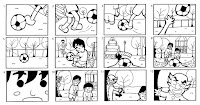Research Methods
Research Methods
Quantitative vs Qualitative
Quantitative data deals with quantities and numbers, and is easy to measure. This type of data would be useful for statistics as part of an infographic or to show clear graphs of audience behaviour.
Qualitative data is in depth analysis into why your audience behaves in such a way. This data can’t be measured as easily, but is incredibly useful as it will give context to a finding.
Surveys/Questionnaires
Surveys and questionnaires are a fantastic (and relatively easy) way to gather data, and can provide you with quantitative (and on occasion qualitative) results that are easy to measure and analyse. They can be created online and distributed by email, social media or advertised on websites, using online tools such as Survey Monkey, Zoomerang or Polldaddy.
| Advantages | Disadvantages |
| Quick to design and send out to large samples | Not able to gain detail behind the responses |
| Easy to measure | Doesn’t ensure responses from relevant participants |
Interviews
Interviews are a conversation between two people, with the interviewer instigating questions to develop in-depth insights into audience behaviour. Interviews gather qualitative data, and can be conducted in person, via instant messaging or on the telephone.
| Advantages | Disadvantages |
| Able to gain in depth responses | Not as easy to measure and analyse |
| Ensures the participants you are speaking to will be relevant to your research | Participants could be influenced by the interviewer or the interviewing environment |
Focus Groups
Focus groups are ‘group interviews’ with a twist. The researcher will ask a group of people relevant to the research a question, and the focus group then discuss it and share their opinions with each other whilst the researcher observes. In the session, make sure you manage the conversation carefully, as there could be a dominant participant who controls the conversation and influences other participants.
| Advantages | Disadvantages |
| Able to generate extra data from the group interaction | Not as easy to measure and analyse |
| Allows a large sample size for qualitative data collection | The researcher could have less control in a focus group setting compared to an interview |
Observation
The final kind of research is observation, in which the researcher observes the participants and collects quantitative data in a natural setting. Observation can be carried out online, or in a situation like a focus group. It can retrieve useful data to compare what your audience says with what they do.
| Advantages | Disadvantages |
| Can compare the data to responses from participants to make a comparison | The observations can not be generalised |
| Generates relevant and quantifiable data | If a group is aware they are being observed, they may behave differently |



Excellent content here - your layout is clear and there's lots of detailed notes.
ReplyDeleteMiss C
Thank you!!!
Delete